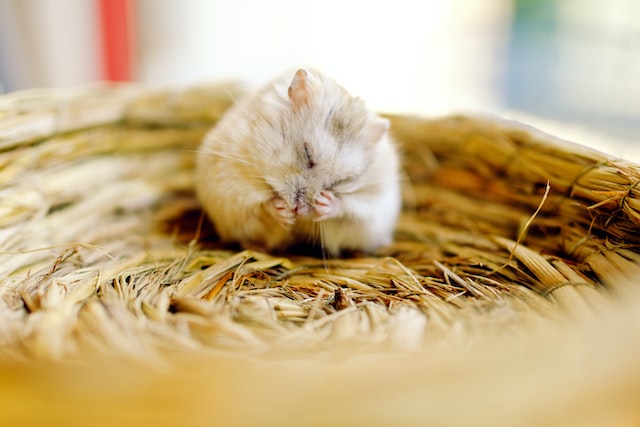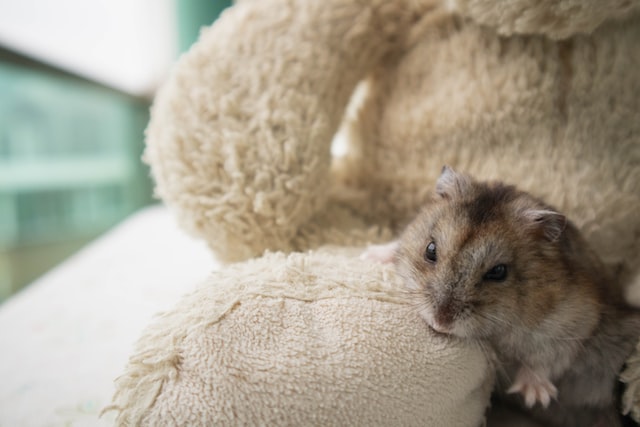When a beloved pet is approaching the end of its life, it can be a difficult and emotional time for its owners. The hamster is one of the most common household pets that may need extra care and comfort during their final days.
While hamsters are small and often thought of as low-maintenance pets, it is important to do everything you can to make them comfortable and give them the best quality of life possible during their last days.
This article will share tips on making dying hamsters comfortable and providing them with comfort and love.
How to Tell When Your Hamster is on the Verge of Dying
As a pet owner, it can be difficult to know when your beloved hamster is approaching the end of its life.
While it is never easy to say goodbye to a furry friend, being aware of the signs that your hamster is nearing the end of their life can help you provide them with the best care possible during its final days.
Here is a list of ways to tell if your hamster is on the verge of dying:
1. Decrease in activity and mobility

If your hamster is usually active and playful but suddenly becomes lethargic and inactive, it could be a sign that they are not feeling well. Keep an eye on your hamster’s activity level and note if they seem to be having difficulty moving around.
2. Difficulty breathing
If your hamster is having difficulty breathing, it could be a sign of a serious health issue, disease, or disorder that needs the utmost attention. Pay attention to your hamster’s breathing patterns and note if they seem to be struggling to get air.
3. Changes in appetite and weight
A decreased appetite and weight loss can signify your hamster is not feeling well. Keep an eye on your hamster’s food intake and note if they seem to be losing weight.
4. Difficulty going to the bathroom
If your hamster is having trouble going to the bathroom or seems to be straining to do so, it could be a sign of a health issue. Keep an eye on your hamster’s bathroom habits and take note if there are any changes.
5. Changes in behavior

As your hamster approaches the end of their life, it may exhibit changes in its behavior that indicate that they are not feeling well. For example, they may become more clingy and seek more attention from you. They may also become more anxious or agitated or seem disoriented or confused.
These changes in behavior can be difficult to witness, but it is essential to remember that your hamster is likely experiencing discomfort or pain and needs extra care and attention.
If you observe any of these symptoms, take your hamster to the veterinarian as soon as possible. Your veterinarian can determine the cause of these symptoms and provide the necessary treatment.
In the meantime, there are several things you can do to make your hamster more comfortable and provide them with the best quality of life possible during their final days.
Tips on How to Make Your Dying Hamster Comfortable
Here are some tips for caring for a dying hamster:
1. Provide a comfortable environment.
Make sure your hamster has a cozy, peaceful, and warm area to sleep in. It might be a compact area like a cardboard box or a nice cage with plush bedding.
2. Keep your hamster hydrated and nourished.
It is vital to keep them hydrated and nourished during their final days. Offer them fresh water and a variety of healthy foods to ensure they get the nutrients they need.
3. Administer medication and seek veterinary care.
If your hamster is experiencing a health issue, it is essential to follow your veterinarian’s instructions for administering medication and seeking further treatment.
4. Offer emotional support

Caring for a dying hamster can be emotionally challenging for you and your pet. It is important to offer emotional support and comfort to you and your hamster during this time.
5. Provide additional warmth.
As your hamster nears the end of their life, it may become more sensitive to cold temperatures. To keep your hamster comfortable, you may need to provide additional warmth in its environment. For instance, you might use a heating pad or blanket or put the cage in a warm spot in your house.
It is crucial to monitor your hamster’s temperature and ensure they are not getting too hot or too cold.
By being aware of the signs that your hamster is approaching the end of their life and taking steps to care for them, you can ensure that your beloved pet is as comfortable and loved as possible during its final days.
Final Remarks
Caring for a dying hamster can be a difficult and emotional experience. Still, by being aware of the signs that your hamster is approaching the end of their life and taking steps to make them comfortable, you can ensure that your beloved pet is loved and cared for during its final days.








